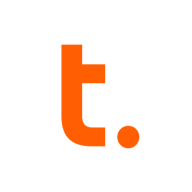

Teradata and Ab Initio Co>Operating System compete in data warehousing and processing solutions. Users tend to prefer Teradata for its pricing and support, but Ab Initio is favored for its advanced features despite higher costs.
Features: Teradata provides scalable database management, robust analytics, and seamless integration with existing systems. Ab Initio offers a comprehensive data processing engine, broad compatibility, and strong metadata management tools with extensive customization options.
Ease of Deployment and Customer Service: Teradata features straightforward deployment with cloud-based options and extensive documentation, supported by responsive customer service. Ab Initio's deployment is flexible but may be complex because of its customizable architecture, yet it is supported by dedicated customer service.
Pricing and ROI: Teradata generally features competitive pricing and a quick ROI due to efficient resource management and lower initial setup costs. Ab Initio involves higher upfront investment, with users finding its ROI justified by powerful data processing capabilities and customizability.

Ab Initio Co>Operating System is used for data integration, ETL processes, and complex data transformations. It is robust in handling large-scale data processing and batch processing, offering scalability, reliability, and performance for managing heavy workloads.
Ab Initio Co>Operating System provides real-time data processing capabilities, an intuitive meta-programming environment, and efficient batch job execution. Users appreciate its flexibility in supporting various data sources and platforms. Primary use cases involve addressing complex data transformations and integration needs, enhancing productivity and efficiency.
What are the key features of Ab Initio Co>Operating System?Industries implement Ab Initio Co>Operating System for its reliable data integration and ETL capabilities. Financial services use it for processing large volumes of transactional data, while retail sectors apply it for real-time analysis of customer data. Healthcare organizations leverage its robust processing for managing patient records and data aggregation.
Teradata is a scalable data analytics platform designed to meet enterprise demands for large-scale data management and processing, focusing on performance, scalability, and security for complex query executions.
As a leading data warehousing solution, Teradata integrates advanced analytics enabling organizations to derive insights from massive datasets. It supports high-volume data workloads with its architecture optimized for analytical queries. Users benefit from its robust scalability, allowing seamless expansion as data grows. Teradata's SQL engine is compatible with a wide range of data types, ensuring flexibility in data analysis. With advanced security measures, it protects sensitive data across various environments, providing peace of mind to users handling critical information.
What are the most important features of Teradata?Teradata is widely used in industries like finance, telecommunications, and healthcare, where data-driven decisions are critical. Companies leverage its robust analytics capabilities to enhance customer experiences, streamline operations, and ensure compliance with regulatory requirements. In these sectors, quick access to data insights can significantly impact competitive advantage.
We monitor all Data Integration reviews to prevent fraudulent reviews and keep review quality high. We do not post reviews by company employees or direct competitors. We validate each review for authenticity via cross-reference with LinkedIn, and personal follow-up with the reviewer when necessary.